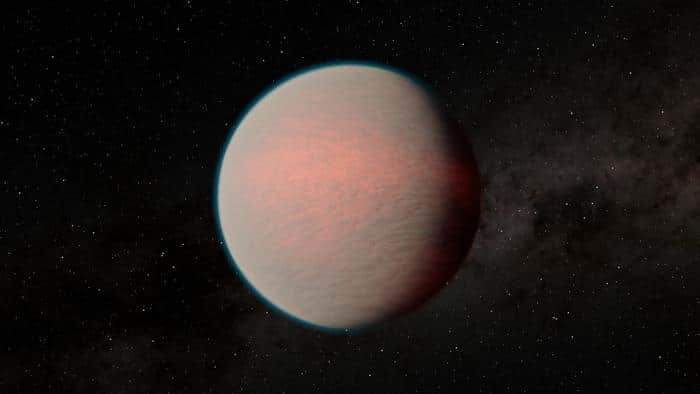Until recently, scientists thought exoplanets were built much like our own Earth: an iron core, surrounded by a mantle of rock and water on the surface. But according to exoplanet expert Carolyn Dorn, that’s too simplistic: “In recent years we’ve begun to realize that planets are much more complex than we thought.”
Most known exoplanets—planets outside our solar system—are relatively close to their star. That makes them extremely hot worlds with oceans of molten magma. This is very different from the solid mantle we know on Earth. Water dissolves well in alien magma oceans, while carbon dioxide, for example, can escape into the atmosphere. Beneath the molten mantle lies the iron cores of these planets. The mantle itself (and the Earth’s crust) is largely made of silicates. But how is water distributed between the silicate rock and the iron?
eighty times more
Dorn Van Dee ETH Zurich With her colleagues from Princeton University Which I researched and its results, One in nature back, It caused a lot of controversy.. It turns out that the amount of water stored in the cores of exoplanets, as well as in the interior of our Earth, is much greater than expected. It may be 80 times greater than the amount of water in all the oceans combined.
This requires some explanation: During the early evolution of the planet, much of the iron was boiling in droplets in the hot magma soup. Water bound up with these droplets and everything slowly sank toward the core. Much of the water disappeared into the planet’s interior. “It seems that the water rises with the iron,” explains Dorn. This process has so far only been observed at moderate pressures that occur on Earth. Dorn’s research now shows that on larger planets — where the pressure is much higher than here — the water is even more strongly attracted to the iron.
very high pressure
The result is that more water ends up in the planet’s core, becoming part of the planet’s interior forever. “Under very high pressure, iron can absorb up to seventy times more water than rock. Because of the enormous pressure in the core, this water is no longer present as H2O molecules, but is split into hydrogen and oxygen,” says the Swiss exoplanet expert.
Four years ago, it was revealed that Earth’s surface oceans contain only a small fraction of our planet’s total water. A 2020 study found that an estimated 80 times as much water as our oceans could be hidden deep underground. That was the signal for Dorn and her team to investigate this phenomenon further using measurements from the James Webb Space Telescope.
Don’t underestimate the water.
The new insights have major consequences for the way we look at exoplanets. Until now, the solubility of water, and its distribution between the mantle and the core, has often been ignored. This has led to a significant underestimation of the amount of water on exoplanets, by at least a factor of ten. “It appears that the planets are much more water-rich than previously thought,” Dorn explains.
The distribution of water is crucial to understanding the formation and evolution of planets. Water that sinks to the core is trapped there forever, while water in the magma layer in the mantle can freely rise to the surface as it cools. “If we find water in a planet’s atmosphere, there’s probably a lot more hidden inside,” Dorn said.
The Webb telescope is able to survey exoplanets and identify molecules in these strange atmospheres, giving us more insight into the composition and potential habitability of these distant worlds.
strange water worlds
Water is a prerequisite for life. There has long been speculation about the habitability of so-called super-Earths, planets much larger than Earth but smaller than Uranus or Neptune and with a surface covered in deep oceans. The fear was that having too much water on the surface would hinder the possibility of extraterrestrial life, because a thick layer of alien ice—under high pressure—would prevent the exchange of essential materials.
But the researchers came to a completely different conclusion in the new study: Planets with deep water layers are probably very rare, because most of the water on super-Earths isn’t on the surface, but locked up in the core. That means that even planets with relatively large amounts of water could harbor life, just as it does on Earth. With their study, Dorn and her colleagues shed new light on the viability of these water-rich worlds.

“Coffee buff. Twitter fanatic. Tv practitioner. Social media advocate. Pop culture ninja.”











More Stories
Which can cause an increase in nitrogen.
The Central State Real Estate Agency has no additional space to accommodate Ukrainians.
The oystercatcher, the “unlucky national bird,” is increasingly breeding on rooftops.